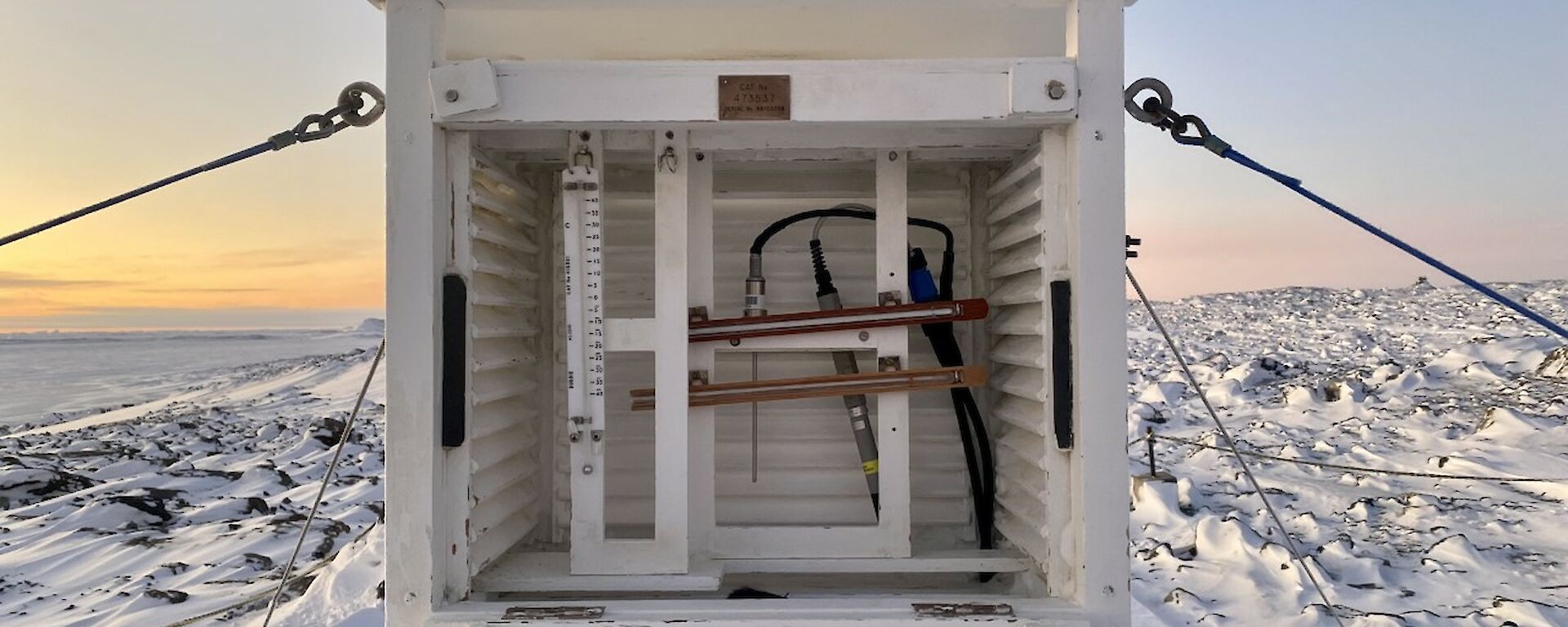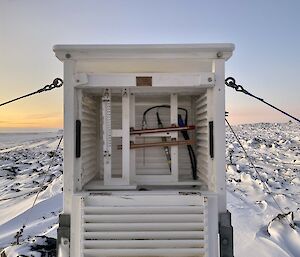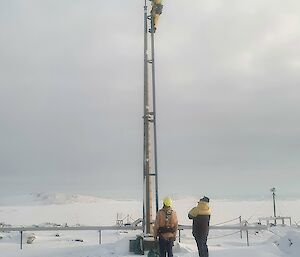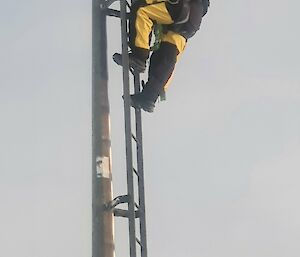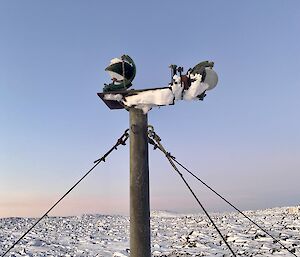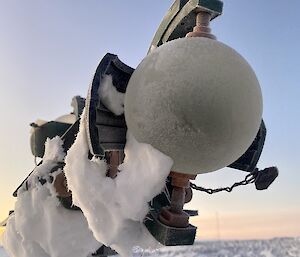Happy Science Week everyone! We thought we would take this opportunity to discuss what it is like to run our meteorological program in extreme Antarctic conditions.
Antarctica is well known for being the coldest, driest and windiest continent on the planet. This renders observing Antarctic weather quite difficult at times. Wind, snow and airborne rock materials often cause havoc on observing equipment. This requires observers in these locations to cover equipment before high winds and perform extensive maintenance following weather events to get equipment back online.
Davis station had a significant blizzard event last month, winds reached gusts of 165 km/h this was paired with a large snowfall event. Much of our equipment was impacted. Our Stevenson screen (instrument enclosure for temperature and humidity probes) was full to the brim with snow and our anemometer (records wind speed and direction) was jammed with snow, freezing the 10 m mast in place. Both are quite arduous tasks to rectify. Once the winds had subsided on Monday, our technician Adam assisted by observers Jason and Hana worked to get all equipment back up and running. Adam was required to climb the 10 m mast to troubleshoot and fix the issue, all this being done in −25˚ Celsius temperatures. Adam radioed info to folks on the ground to ensure the direction of the anemometer vane was accurately calibrated.
A Campbell Stokes sunshine recorder is the device used by the Bureau of Meteorology to record to amount of sunshine hours per day. Davis is the most southern Australian Antarctic station, located at 68˚ south. During the summer months, the north-facing sunshine recorder does not have enough scope to capture all the sunlight hours as there are 5 weeks when the sun does not dip below the horizon. To address this very polar limitation we have a second south-facing sunshine recorder to capture the entirety of long daylight hours.
During winter (April-September) when the days are shorter only the north-facing sunshine recorder is used. The North-facing sunshine card is replaced prior to sunrise (typically before 7:30 am). There is a 5 week period in June and July when the sun does not rise above the horizon, the device is covered during this time to prevent any potential damage to the glass globe caused by rocks whipped up by strong winds.
Although there are significant challenges to weather observing in Antarctic conditions, it is also incredibly rewarding. The Antarctic continent has the sparsest amount of weather stations on earth, the data these stations collect is of heightened importance as we endeavour to improve Antarctic forecasting accuracy and understand more about global weather patterns as a whole.
Hana Glencross, BoM Weather Observer

